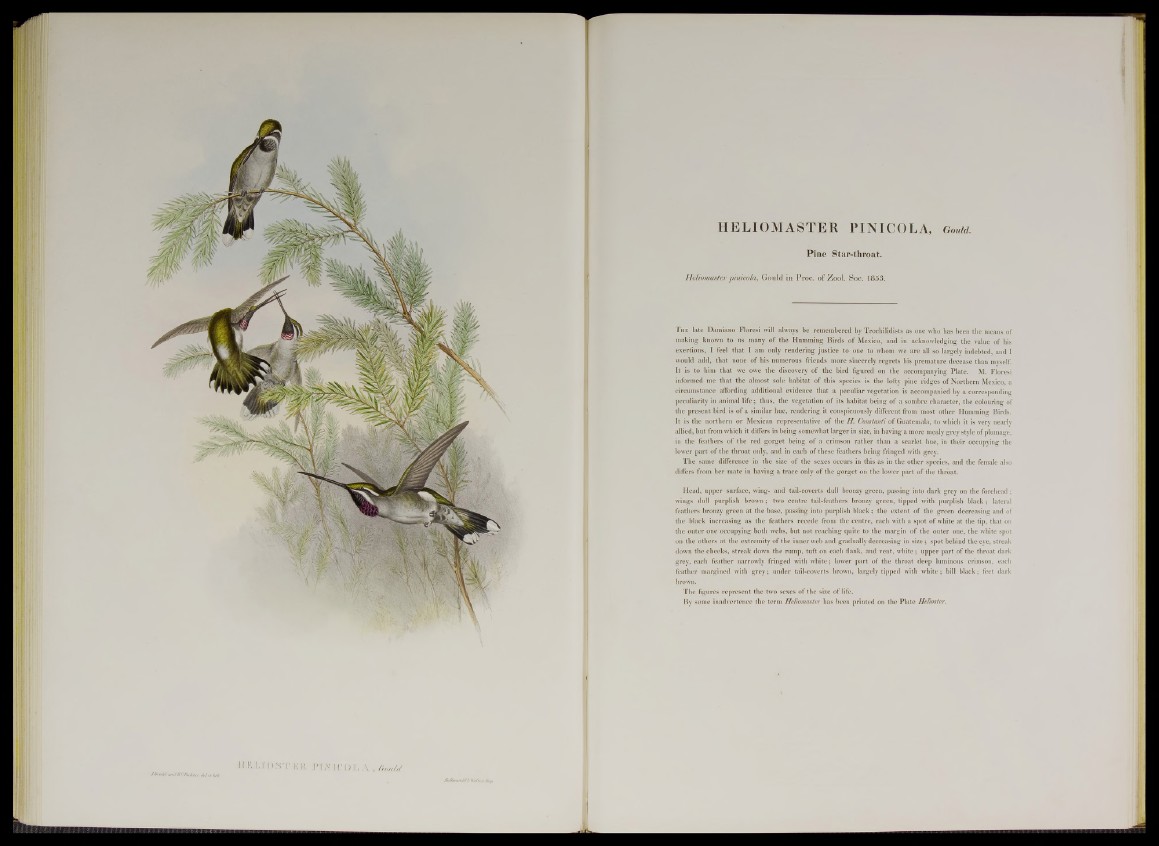
HELIOMASTER PINICOLA, Gould.
Pine Star-throat.
Heliomaster pinícola, Gould in Proc. o f Zool. Soc. 1853.
T he late Damiano Floresi will always be remembered by Trochilidists as one who has been the means of
making known to us many of the Humming Birds of Mexico, and in acknowledging the value of his
exertions, I feel that I am only rendering justice to one to whom we are all so largely indebted, and I
would add, that none of his numerous friends more sincerely regrets his premature decease than myself.
It is to him that we owe the discovery of the bird figured on the accompanying Plate. M. Floresi
informed me that the almost sole habitat of this species is the lofty pine ridges of Northern Mexico, a
circumstance affording additional evidence that a peculiar vegetation is accompanied by a corresponding
peculiarity in animal life; thus, the vegetation of its habitat being of a sombre character, the colouring of
the present bird is of a similar hue, rendering it conspicuously different from most other Humming Birds.
It is the northern or Mexican representative of the H Constanti of Guatemala, to which it is very nearly
allied, but from which it differs in being somewhat larger in size, in having a more mealy grey style of plumage,
in the feathers of the red gorget being of a crimson rather than a scarlet hue, in their occupying the
lower part of the throat only, and in each of these feathers being fringed with grey.
The same difference in the size of the sexes occurs in this as iu the other species, and the female also
differs from her mate in having a trace only of the gorget on the lower part of the throat.
Head, upper surface, wing- and tail-coverts dull bronzy green, passing into dark grey on the forehead ;
wings dull purplish brown; two centre tail-feathers bronzy green, tipped with purplish black; lateral
feathers bronzy green at the base, passing into purplish black; the extent of the green decreasing and of
the black increasing as the feathers recede from the centre, each with a spot of white at the tip, that on
the outer one occupying both webs, but not reaching quite to the margin of the outer one, the white spot
on the others at the extremity of the inner web and gradually decreasing in size; spot behind the eye, streak
down the cheeks, streak down the rump, tuft on each flank, and vent, white; upper part of the throat dark
grey, each feather narrowly fringed with white; lower part of the throat deep luminous crimson, each
feather margined with grey; under tail-coverts brown, largely tipped with white; bill black; feet dark
brown.
The figures represent the two sexes of the size of life.
By some inadvertence the term Heliomaster has been printed on the Plate Helioster.